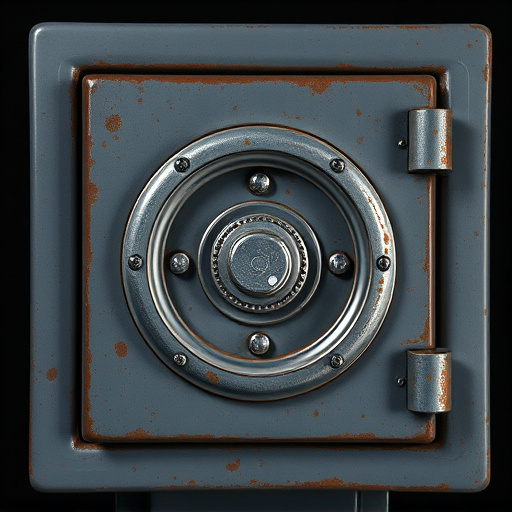In an era where privacy is paramount, integrating security into everyday items like fake cleaning products offers a creative solution for valuable item storage. These cleverly designed decoys provide discreet protection against prying eyes, blending functionality with discretion. With advanced security features such as combination locks and biometric sensors, these "game-changer" safes ensure access only to authorized users. Regular maintenance and vigilant monitoring further safeguard their contents, making them effective deterrents for potential thieves in daily life.
In an era where security threats lurk unseen, everyday items can become our silent allies. Explore the innovative concept of integrating covert compartments within seemingly ordinary objects, like a fake cleaning product security safe, to safeguard valuables. This article delves into the critical need for discreet security, offers insights on designing hidden spaces, discusses user-friendly implementation, and highlights real-world applications that transform daily life through enhanced protection.
- Understanding the Need for Discreet Security: Why a Fake Cleaning Product Can Be Your Secret Weapon
- Unlocking the Potential: Designing a Covert Compartment in Everyday Items
- Implementing Security Measures: Ensuring Your Safe's Integrity and User-Friendliness
- Real-World Applications: Stories of Success and the Impact on Daily Life
Understanding the Need for Discreet Security: Why a Fake Cleaning Product Can Be Your Secret Weapon
In today’s world, discretion and secrecy are paramount for individuals seeking to protect their belongings from prying eyes or theft. The idea of a covert compartment within an everyday item, such as a fake cleaning product, offers an innovative solution to this growing concern. This seemingly innocuous item serves as both a decoy and a highly secure storage unit—a secret weapon in the battle for personal security.
The appeal lies in its ability to blend seamlessly into one’s daily routine while providing a safe haven for valuable items. A cleverly designed fake cleaning product, accessible only through hidden mechanisms, ensures that sensitive materials remain hidden from view. This simple yet effective approach to security is particularly appealing for those who need to transport or store confidential documents, small electronic devices, or other precious possessions discreetly and securely.
Unlocking the Potential: Designing a Covert Compartment in Everyday Items
Unlocking the Potential: Designing a Covert Compartment in Everyday Items
In today’s digital era, where security concerns are paramount, innovators are constantly exploring new ways to protect our belongings. One such creative approach is integrating covert compartments into everyday items, offering a discrete and innovative solution for item security. By concealing storage spaces within seemingly ordinary objects like fake cleaning products, we can create safe havens for valuable items. These hidden compartments provide an added layer of protection, ensuring that only the intended user gains access to their contents.
Designing such features requires careful consideration of materials, craftsmanship, and functionality. The ideal covert compartment should be virtually indistinguishable from its host item, be it a bottle of cleaning solution or a stylish handbag. This level of disguise makes it challenging for casual observers to suspect the presence of a secure storage space. Moreover, incorporating advanced security mechanisms like combination locks or biometric sensors enhances the safety and accessibility of these hidden compartments, making them a game-changer in personal security.
Implementing Security Measures: Ensuring Your Safe's Integrity and User-Friendliness
Implementing robust security measures is key to keeping your covert compartment, disguised as a fake cleaning product, intact and accessible only to its intended users. These measures should balance integrity—ensuring no unauthorized access or tampering—with user-friendliness, allowing for quick and easy operation when needed. A secure combination lock with a complex yet memorable code is a solid foundation, offering a basic level of protection against casual intruders.
For enhanced security, consider incorporating multi-factor authentication. This could involve using biometric scanners, such as fingerprint or facial recognition technology, adding an extra layer of defense. Additionally, regular maintenance and auditing of access logs can help identify potential vulnerabilities and ensure the safe remains secure over time, protecting its contents from prying eyes and untoward incidents.
Real-World Applications: Stories of Success and the Impact on Daily Life
In everyday life, the need for secure storage solutions is often overlooked until the unthinkable happens—a moment of vulnerability when personal items are at risk. This is where innovative designs like the covert compartment security unit find their true calling. These discreet units have revolutionized how people safeguard their belongings, especially in the face of growing concerns about home security and privacy.
Real-world applications of these clever devices have been nothing short of remarkable. For instance, homeowners have successfully hidden them inside seemingly ordinary fake cleaning product bottles, ensuring valuable items like passports, jewelry, or even cash remain out of reach from intruders. This simple yet effective approach has given individuals a powerful tool to protect their assets, fostering a sense of security and peace of mind. The impact is felt in daily life, where the mere presence of such a safe serves as a deterrent, making potential thieves think twice before attempting any mischief.
In conclusion, the integration of covert compartments within everyday items, utilizing a fake cleaning product security safe as a discrete solution, offers a revolutionary approach to personal security. By cleverly concealing valuable assets, this innovative concept ensures individuals can go about their daily routines with enhanced peace of mind. With successful real-world applications already in evidence, it’s clear that this technology is not just a futuristic idea but a practical and effective way to safeguard our belongings.
